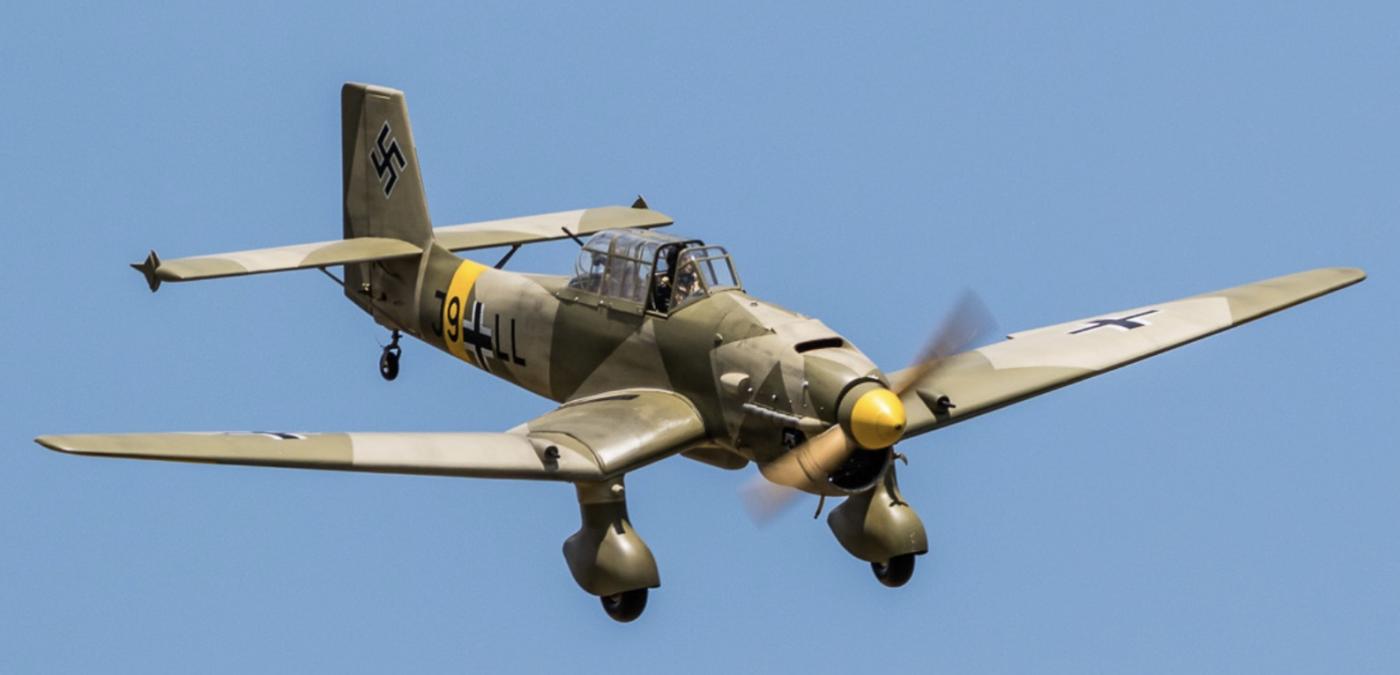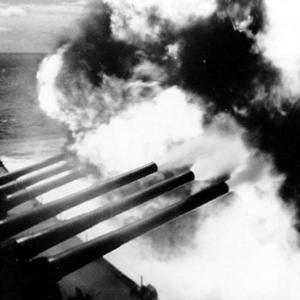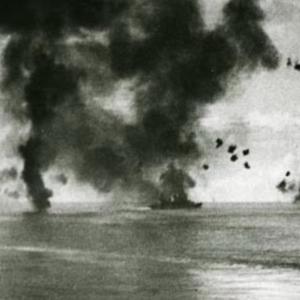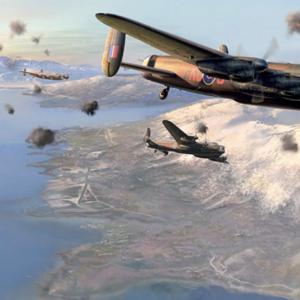
Junkers JU87 Stuka Dive Bomber
The Junkers Ju 87, nicknamed "Stuka" (short for Sturzkampfflugzeug, or "dive bomber"), was a German dive bomber and ground-attack aircraft. Designed in the early 1930s by Hermann Pohlmann and produced by Junkers, the aircraft became one of the most iconic symbols of Nazi Germany’s Blitzkrieg tactics during the early years of World War II. The Ju 87 was developed to meet the Luftwaffe’s need for a precision ground-attack aircraft capable of destroying fortified positions, bridges, and tanks.
The concept of dive-bombing was still relatively novel in the early 1930s, and Germany, still rearming secretly in violation of the Treaty of Versailles, experimented heavily with this tactic. The Ju 87’s first prototype flew in 1935. Though early models experienced structural failures, refinements and new engines led to a reliable airframe optimized for near-vertical dives.
The Ju 87 featured several innovative design elements. Its inverted gull wings improved pilot visibility and increased ground clearance for the large fixed landing gear, which were fitted with distinctive wheel "spats" (covers). It also had an automatic dive recovery system, a mechanical device that pulled the aircraft out of a dive if the pilot blacked out from G-forces. This made the Ju 87 exceptionally safe for dive-bombing despite its risks. Another notable feature was the Jericho Trumpet, a psychological weapon: a wailing siren mounted on the landing gear and activated during dives to terrorize enemy troops and civilians.
The aircraft had a two-man crew—pilot and rear gunner/radio operator. The rear gunner operated a 7.92mm MG 15 machine gun for defense. Its bomb load typically consisted of a 500 kg bomb beneath the fuselage and smaller 50 kg bombs under the wings. Though not particularly fast or maneuverable, the Ju 87 was incredibly precise, delivering devastating blows to enemy fortifications and vehicles.
The Ju 87 made its combat debut during the Spanish Civil War (1936–1939) as part of the Condor Legion, giving German forces practical experience. In Spain, the Stuka proved highly effective, and its use in coordinated attacks with fast-moving armored columns became a core principle of the German Blitzkrieg strategy.
During the invasions of Poland (1939), France (1940), the Low Countries, and the Balkans, the Ju 87 was at its peak. It played a crucial role in destroying enemy artillery, communication centers, and convoys. The aircraft's precision strikes, combined with the terrifying scream of the Jericho Trumpet, often caused panic and disorganization among enemy forces.
In these campaigns, the Stuka’s limited speed and poor defensive capabilities were not a major issue due to German air superiority. However, as the war progressed, this became a significant vulnerability.
The Battle of Britain (1940) marked a turning point for the Ju 87. Up against fast and agile RAF fighters like the Supermarine Spitfire and Hawker Hurricane, the Ju 87’s slow speed, limited maneuverability, and light armament made it an easy target. Losses were so severe that the aircraft was withdrawn from the Channel front after just a few weeks.
Despite its vulnerability, the Ju 87 remained in widespread use on the Eastern Front and in North Africa. During Operation Barbarossa, the German invasion of the Soviet Union launched in June 1941, the Ju 87 played a critical role in supporting the rapid advances of the Panzer divisions. Approximately 500 Ju 87s were deployed in the initial phases of Barbarossa, flying alongside armored units to destroy Soviet tanks, artillery positions, supply depots, and troop concentrations. The Ju 87’s precision bombing and close air support helped disrupt Soviet defenses and logistics, paving the way for swift German advances across vast distances.
On the vast Russian steppes, where the Luftwaffe often retained local air superiority, the Ju 87 continued to support ground troops effectively. Hans-Ulrich Rudel, the most decorated German pilot of the war, flew over 2,500 missions in a Ju 87 and destroyed hundreds of Soviet tanks, trains, and even a battleship. His personal success highlighted the aircraft’s continued usefulness in specialized roles.
In North Africa, the Ju 87 was used extensively in close air support roles. However, by 1943, increasing Allied air superiority and the arrival of faster, more heavily armed fighter-bombers began to overshadow the Stuka’s utility. Despite these challenges, the Ju 87 was adapted for anti-tank roles, mounting 37mm cannons under its wings, which could penetrate the armor of early war tanks.
By the later stages of the war, the Ju 87 was largely replaced by faster and more versatile aircraft such as the Focke-Wulf Fw 190 and the Messerschmitt Bf 109 in the ground-attack role. Nonetheless, the Stuka continued to fly missions into 1944 and 1945, especially on the Eastern Front, where it remained effective in areas with limited enemy air cover.
The Ju 87’s legacy is mixed. It was instrumental in early German successes due to its precision and psychological impact, but it became increasingly vulnerable as air defenses improved. The design itself was innovative for its time, pioneering dive-bombing techniques and tactics that influenced air forces worldwide.
Despite its drawbacks, the Ju 87 Stuka remains one of the most recognizable aircraft of World War II. Its distinctive silhouette, eerie dive siren, and devastating ground-attack capability have cemented it in history as a symbol of both technological ingenuity and the brutal realities of aerial warfare.










